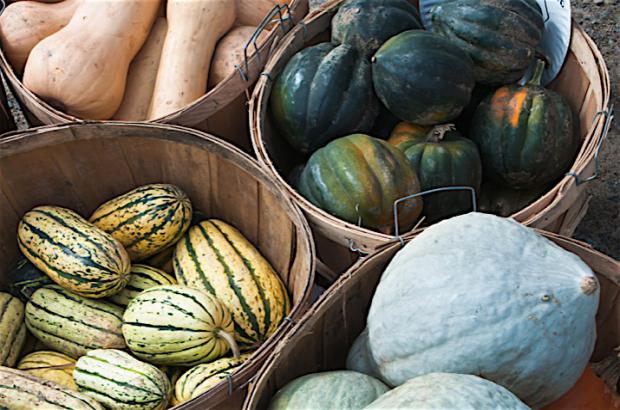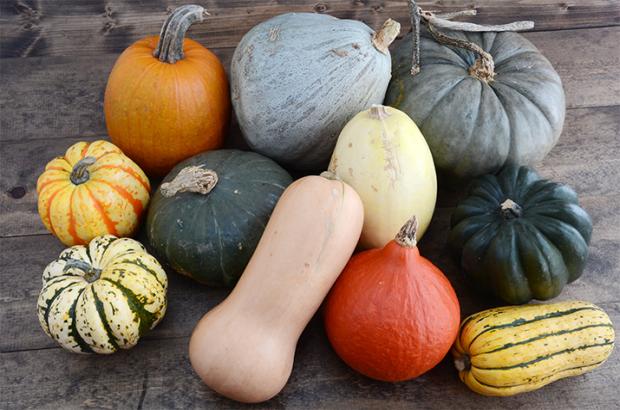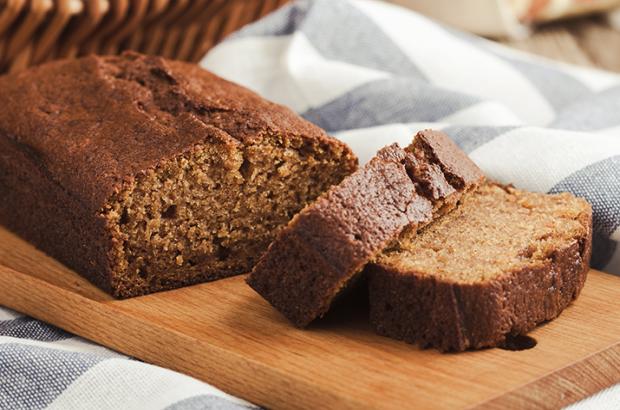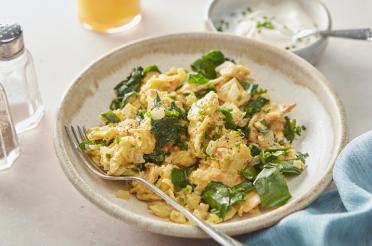Article
Winter Squash
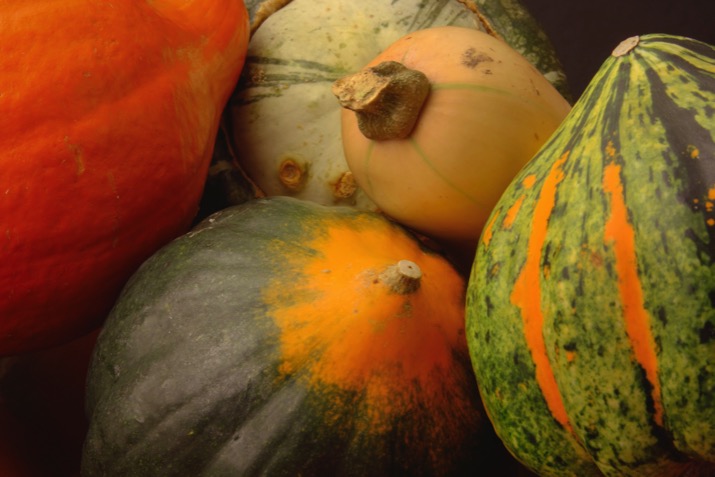
One of the oldest cultivated foods in the Western Hemisphere, squash seeds have been dated back to 8,000 BCE in Mexico. In both North and South America, the seeds and flesh of squash were an important part of the pre-Columbian Indian diet.
Native Americans dubbed squash one of the "Three Sisters" (the siblings are beans and corn) and relied on it for food as well as containers and utensils, thanks to the fruit's hard shell. Winter squash was also a staple food of early colonists and was grown by both George Washington and Thomas Jefferson.
Today, winter squash is commercially grown in Mexico and Costa Rica and, in the U.S., in California and Florida. But you're likely to have local growers of this easy-to-grow vegetable no matter where you live.
The exact nutrients in a winter squash depend on its variety. In general, we can count on winter squash being low in fat and calories and a good-to-excellent source of vitamin A (in the form of beta carotene, an antioxidant), vitamin C, fiber, magnesium and potassium. It also provides niacin, folate and iron. The darker the orange color of the flesh, the more beta-carotene the squash provides.
When it comes to winter squash, we're talking a wide variety of fun and quirky-looking produce, from knotty hubbards to smooth butternuts and outrageous turbans. Come fall, there's no better table decoration than an assortment of winter squash!
Winter squash belongs to the same botanical family as summer squash but has a harder rind and keeps much longer. Here are some of the most popular types of winter squash:
- Acorn squash is dark green, hard and ribbed, with firm yellow-orange flesh and a sweet flavor. Varieties include Ebony, Swan White, Table Gold and Cream of the Crop.
- Delicata has a long, cylindrical shape and is cream colored with dark green stripes. Sometimes called sweet potato squash, it does taste a bit like sweet potatoes. Varieties include Honey Boat, Sugar Loaf and Sweet Dumpling.
- Hubbard squash has a green/blue/gray skin and sweet, dense orange or yellow flesh. It's one of the bigger squash varieties (large varieties are sometimes cut and sold in wedges). For smaller options, look for the Blue Ballet and Red Kuri varieties. Because of their very hard skins, hubbards are especially good keepers.
- Spaghetti squash has bright yellow skin and a golden yellow, mild-tasting flesh that's much like spaghetti in texture. Orangetti, Pasta, Stripetti and Tivoli are varieties of spaghetti squash.
- Sugar pumpkin. These pint-sized pumpkins are also called pie pumpkins; they're smaller and more flavorful than jack-o-lantern varieties.
- Butternut has beige/tan skin and an orange flesh. Varieties include Butterbush, Early Butternut, Puritan, Waltham, Zenith and Lakota (an heirloom variety).
- Turban squash is often grown for decoration, though it's perfectly edible. Shaped like a turban, with bright orange, green, and white skin, the flesh is yellow and can be used in place of sugar pumpkins in recipes.
Delightfully delicious squash adds bright color and nutrition to any menu. It can be baked, steamed, mashed, roasted, sauteed or microwaved. It's especially suited to soups like this easy but elegant Creamy Caramelized Onion and Squash Soup with Croutons (topped with Greek yogurt and toasted pumpkin seeds) and this robust Butternut Squash Soup with Sun Dried Tomatoes, in which it's paired with onion, mushrooms, garlic, sun dried tomato and potato. When combined with chicken, red potatoes, and a strong seasoning like curry powder, winter squash makes for a hearty Curried Winter Squash and Chicken Stew.
Use winter squash to create luscious risottos, lasagnas and main-dish gratins (topped with Gruyère), or alternate lovely layers of winter squash with fruit such as pears or apples, as in this Winter Squash and Apple Bake (maple syrup and warm spices seal the deal).
Winter squash makes for a beautiful salad when paired with roasted peppers, pine nuts, chickpeas and greens. It holds up well with spicy dressings (think garlic, ginger and jalapeños). In this Ginger Miso Dressing with Squash and Spinach Salad, an Asian-style vinaigrette coats the squash, which is also dotted with sesame seeds, making for a truly enticing dish.
Its creamy texture creates a lovely sauce, too, for serving atop pasta or grains. Orange juice, olive oil, butter, balsamic vinegar, tahini and sour cream are good companions.
Winter squash even stars in baked goods—like golden muffins or quick breads with cinnamon and cloves—and desserts, like pies redolent with allspice and nutmeg and cookies dotted with cranberries.
Read more about the heritage of winter squash and celebrate its delightful taste in this Sweet, Sweet Squash article.
Winter squash is harvested in the fall, but because it stores so well, you may find it at your co-op throughout most of the year.
Look for winter squash that's heavy for its size, with a dry skin and no cracks or soft spots. If the skin is easily nicked (with a fingernail, for example), it means it's immature. The skin should be dull, not shiny (also a sign of immaturity—or waxing), and the stem should be firm, rounded, and dry. When available, choose squash with a stem, because the stem helps the squash retain its internal moisture and protects it from bacteria.
Unlike summer squash, winter squash can be stored for most of the winter, thanks to its hard skin. Place winter squash in a cool, dry place (on layers of newspaper, if you like) for three to six months or more. Simply check it occasionally to see that it has no rotting spots.
After cutting, wrap and store the squash in the refrigerator for four to five days. Cooked winter squash flesh can be frozen for up to a year.
Winter squash is a delight to both the eye and the taste buds—with the bonus is that it's so easy to keep around.

